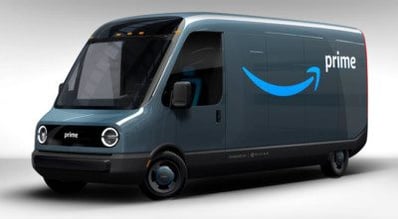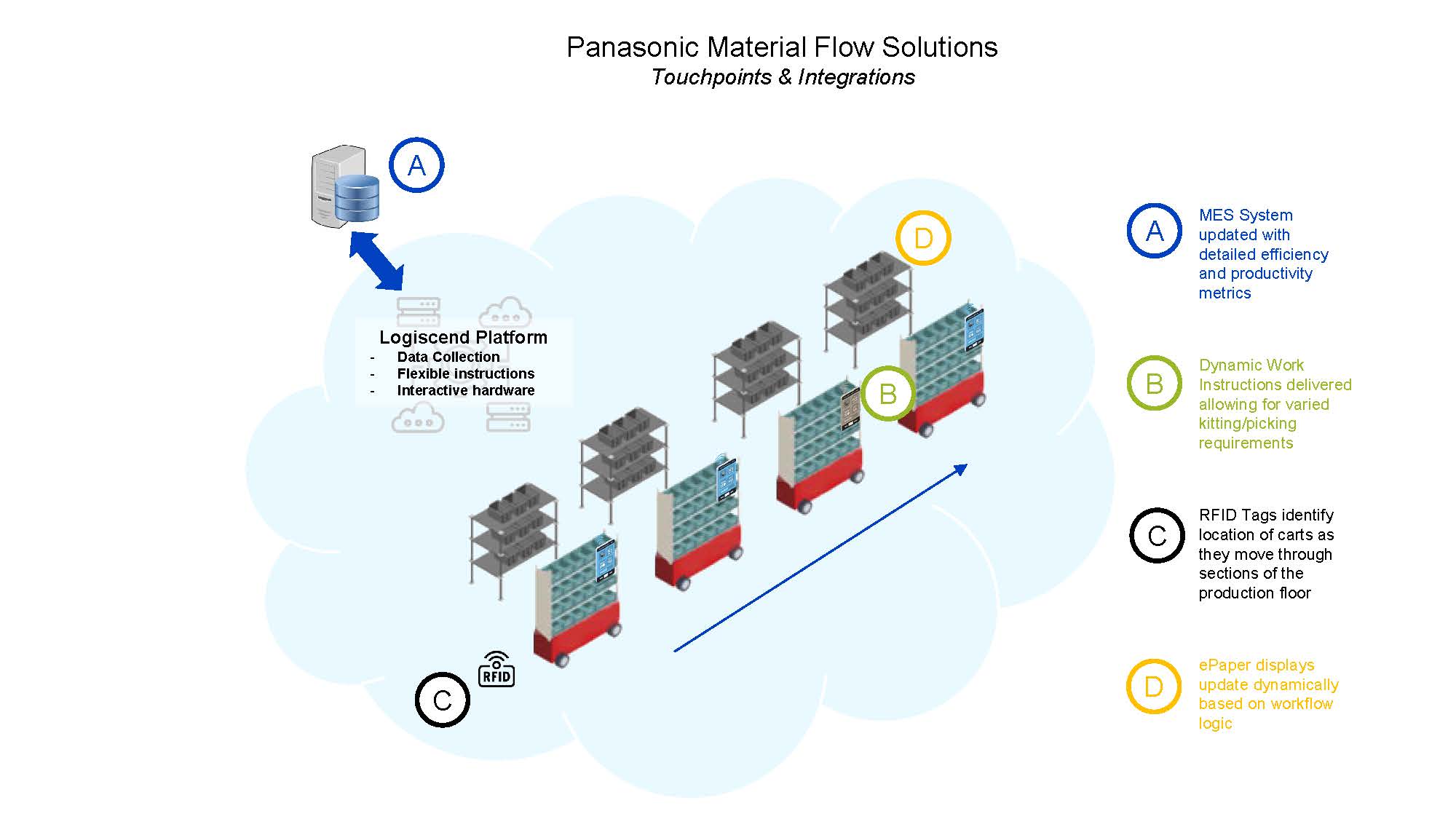Electric Vehicles Are Next In Sequence
- Panasonic Blog
- 6 mins
Electric vehicles (EV) are in the news more and more—the investments manufacturers are making for their production, component sourcing challenges, new technologies being deployed, and tracking consumer demand for the vehicles worldwide. It’s worth taking a step back to look at what makes EV manufacturing so relevant.
The Top 4 Reasons People are Talking About Electric Vehicles…Only One is “Green”?
People often lump four reasons into one because they are converging to create action, but each is a distinct factor on its own:
1. Ease of Manufacturing
It is simply easier and less costly to produce reliable vehicles when they are electric. Electric motors that power EV’s comprise far fewer components and far fewer moving parts than a traditional internal combustion engine (ICE). China is the largest producer of electric vehicles by far. They understand it is less expensive and easier to build electric vehicles to meet the needs of their enormous population. It is expected that by 2030 100% of passenger vehicles in China will be electric. This is NOT driven by a desire to be “green” on the part of China; it is simply the fastest and most reliable path to scale up their vehicle production.
2. Ease of Adding Peripherals

There was once a battle over embedded vehicle network standards with CAN bus, FireWire, FlexRay and even more arcane ways to connect devices from fuel injectors to infotainment systems. Specialized diagnostic tools and mechanics were needed to diagnose the components and figure out what was going on in your car. Each manufacturer had different ways of doing things. The move to vehicle electrification has brought with it the common electric peripherals and networking we use in the larger scale consumer economy. Along with lower costs at scale, this has also made it much easier to diagnose in-vehicle networks and gather sensor data. We are able to enjoy Wi-Fi, Bluetooth and wired Ethernet inside the vehicle. Manufacturers can more easily create “plug and play” options for their products, everything from smart heated coffee cup holders to powerful computers embedded in the dashboard. Electrification and the related move to Automotive Ethernet has been a major factor in making it easier for manufacturers to leverage consumer technologies to reconfigure and customize a vehicle to meet consumer demand. With EV, to enhance the model you just hook another device on a network.
3. Connected Vehicles
When you’re using Ethernet for all devices and components down to your disc brakes, it makes it easy to open up the vehicle for 3rd Parties to develop apps to serve the customer base … your car is now just a PC or Smartphone with wheels! Connecting vehicles to the Cloud to deliver services (Connected Vehicles) is a major new development that is wrapped up in the electrification movement. With connected vehicles, you can do much more than just track usage and diagnose issues for the driver. We can start using apps and services that are favorites of ours on other platforms. For example, Siri and Alexa or other voice alternatives are now being embedded into most new vehicle models. The development of 5G technology was partly driven (pardon the pun) by the idea that connected and autonomous vehicles (the top of the IoT device food chain) would need much more bandwidth at speed as the app space began to interact with them. This connection to internal, mobile and cloud networks opens new revenue models for car makers who want to get into the services business—as virtually all hardware manufacturers do. Imagine the ad revenue that’s possible inside a vehicle when you literally have a captive consumer inside. We know when the vehicle is low on fuel and can serve up special offers from competing stations. When someone uses the nav system to find their favorite restaurant, several other alternatives in the area could be shown (if they pay for placement). Imagine the business revenue possible from turning vehicles into fully connected workplaces, tied to your office apps on a subscription basis. Think about tolling, parking, law enforcement and other municipal revenue streams. These and many other powerful incentives are driving the evolution of your vehicle into another platform to be monetized.
4. Clean Energy and Sustainability

The factor that everyone thinks of first may not be the main driver for EV technology. While electric vehicles are more sustainable and inherently more efficient, many experts believe the assessment of a lessor environmental impact overall may be more emotional than empirical, once the environmental impact of generating charge and current practices in battery manufacturing and disposal are factored in. The mining industry is seeing the beginning of what is expected to be a sustained boom as they extract battery minerals at a frantic pace, often permanently altering remote areas of the planet in the process. These batteries must be charged regularly at stations drawing from the local electricity provider. Today, those providers operate plants which rely on fossil fuels for 30% – 35% of their power. Yet according to the Deloitte Center for Energy Solutions (2018), if all vehicles in the US become electric by 2040, providers will have to increase their capacity by 300 times to cover this impact alone (not to mention the growth of the many other mobility devices we love). This is far more capacity than can be provided from wind or solar expansion, which many expect will result in fossil fuel power plant growth or dramatic investment in nuclear for the first time in decades. Further, batteries have a limited lifespan and there is currently no viable way to recycle them for sustainable use. The amount of annual extraction from the planet required to power a global fleet of battery-operated cars is mind-numbing. By mandating conversion to EVs without solving these fundamental problems, we may actually be committing to a net negative in environmental impact.
However when a need arises, the market often responds. While the equation does not make sense today, pushing the industry to put electric cars on the road (without a sustainable way to power them or recycle the mountains of batteries we are producing) is driving investment in these needed solutions. For instance, Wang et al (2021) recently proposed an early technology path where batteries could eventually be recycled back to core elements. While the jury may still be out on sustainability, we see the ease of manufacturing, reliability, ease of networking peripherals and ability to create fully connected vehicles as the most meaningful drivers toward electric right now.
Helping EV Manufacturers in New Ways
As consumers think of their electric vehicle as more than just a way to get somewhere and want to take advantage of the ability to add just the right mix of features and components, new material handling challenges are emerging for manufacturers. With a greater variety of components being brought together at the assembly line in more combinations, manufacturers need a way to build efficiently and reliably Just-in-Sequence to meet the customization demands of consumers.
 The Panasonic Logiscend System is an IIoT material flow management solution that combines the power of wireless, e-Paper Panasonic VIEW tags with advanced software to help complex manufacturing operations get the right parts, to the right place, at the right time. It enables a hands-free, paperless process to improve Just-in-Sequence pick and kitting speed and accuracy, as well as enhance material flow with a wireless, paperless, IIoT system for parts replenishment. When the inevitable problem occurs, a wireless, visual cue is immediately given at the right place and time to get the sequence back on track.
The Panasonic Logiscend System is an IIoT material flow management solution that combines the power of wireless, e-Paper Panasonic VIEW tags with advanced software to help complex manufacturing operations get the right parts, to the right place, at the right time. It enables a hands-free, paperless process to improve Just-in-Sequence pick and kitting speed and accuracy, as well as enhance material flow with a wireless, paperless, IIoT system for parts replenishment. When the inevitable problem occurs, a wireless, visual cue is immediately given at the right place and time to get the sequence back on track.
The Logiscend system can further assist in the digital transformation by integrating all material functions into one suite of related workflows. There is powerful synergy in linking the pick, replenishment, asset and container tracking along with delivering dynamic digital work instructions to the operator. Material is the one factor that goes through the entire manufacturing process. If a manufacturer focuses on optimizing material flow, they inevitably optimize everything that touches it.
What Drives Your Interest in EV?
 After 100 years with few new carmakers, right now we’re seeing multiple, brand new, fully electric manufacturers enter the market, and established players are refitting their old plants to produce EV. Technology companies like Google and Amazon are throwing major capital into vehicle design and manufacturing. With more components and new supply chains, Logiscend can help each of them flexibly deliver exactly the right parts to the right place at the right time.
After 100 years with few new carmakers, right now we’re seeing multiple, brand new, fully electric manufacturers enter the market, and established players are refitting their old plants to produce EV. Technology companies like Google and Amazon are throwing major capital into vehicle design and manufacturing. With more components and new supply chains, Logiscend can help each of them flexibly deliver exactly the right parts to the right place at the right time.
Learn more about all the Panasonic Logiscend applications right here.
Wang et al (2021), Recent Progress on the Recycling Technology of Li-ion Batteries, Journal of Energy Chemistry, Volume 55, April 2021, Pages 391-419


